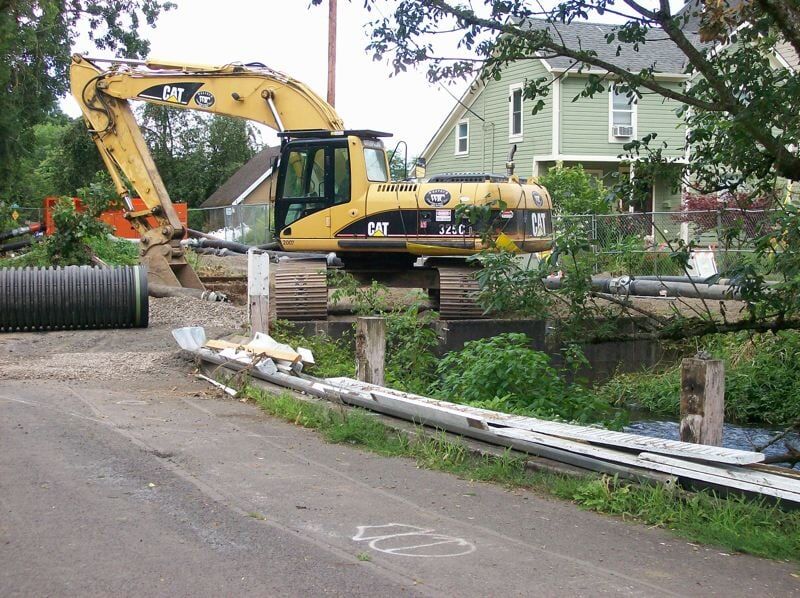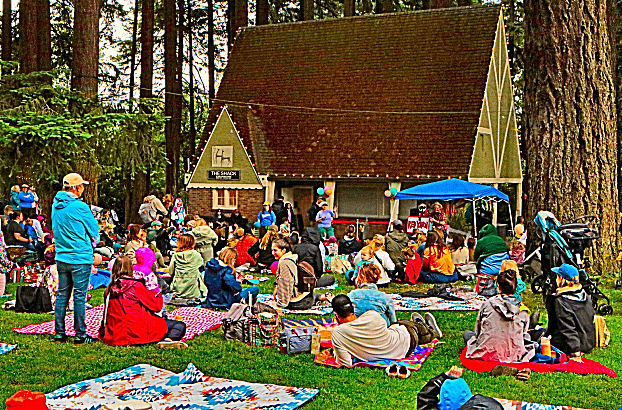Crystal Springs Creek fish restoration project underway in Sellwood
Published 12:00 am Wednesday, August 1, 2012

- Heavy equipment begins excavation at S.E. 21st and Tenino Street.
Phase I of a complex urban wildlife project is currently underway in Sellwood.
Trending
Crystal Springs Creek, in the area south of Tacoma Street, is being enhanced with new culverts, green street stormwater facilities, and the restoration of stream and wetland habitats. The creekside project was begun in July with a barrage of orange detour signs, followed by the arrival of large earth-moving equipment, followed by stacks of construction materials and large pipes.
The goal is to establish a new interpretive trail and Nature Park in the area of the former Brannen home along S.E. 21st between S.E. Tenino and Umatilla Streets — while restoring riparian and wetland habitats to encourage threatened species of fish, native plants, and other wildlife.
The project is funded largely by the Corps and the City of Portland, and is hoped to become a model of urban wildlife restoration. Portland’s Bureau of Environmental Services purchased the property with funds from the “Grey to Green Initiative”, and the project has created much local interest with all the activity and road closures. This area is just North of Johnson Creek Park, where Crystal Springs Creek merges into Johnson Creek on its way to the Willamette River.
The city, county, and U.S. Army Corps of Engineers are cooperating to enhance urban runs of coho and Chinook salmon, steelhead, cutthroat trout, and other wildlife, by cleaning up and redesigning the stream bed. Reed College, at the headwaters of Crystal Springs Creek, is also monitoring the project in a cooperative effort to restore historic fish runs to that area.
Construction crews are working hard to minimize and mitigate adverse effects to the site. Toward the end of July, one worker remarked that the most difficult task that week was trying to dam up the creek so that new culverts could be installed. A temporary but impressive waterspout south of S.E. Tenino Street, installed in conjunction with arriving pumping equipment, was intended to alleviate stream flow concerns.
The SMILE Salmon Hatchery at S.E. 23rd and Lambert was a longtime participant in fish enhancement facilities at the south end of Westmoreland Park, in parallel with juvenile salmon released in the Reed College canyon. Eventually, the culvert at S.E. Tacoma Street will be replaced by a fish-friendly one, to improve water quality and restore upstream fish passage.
Phase II of the project will focus on the long-planned removal of the Westmoreland Park duck pond and restoring the stream there to its original creek and wetland habitat. This should help cool water temperatures and create more desirable spawning grounds for native fish species, and may have the welcome side effect of reducing duck and goose waste from the grass at the north end of the park.
Invasive plants are to be removed and replaced with more native species, and there are to be tree plantings to help shade the creek bed. Trail observation structures are planned to improve educational opportunities for park users.





